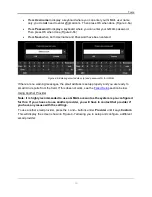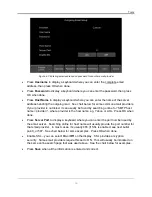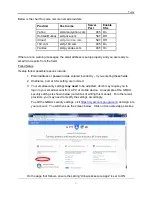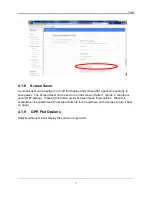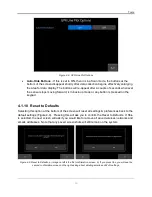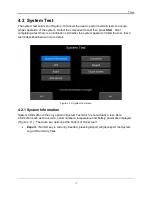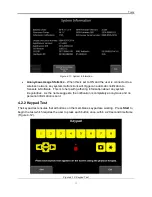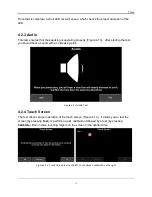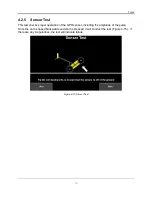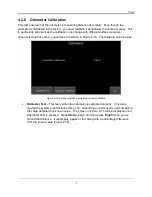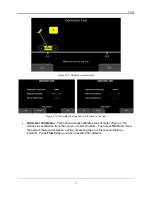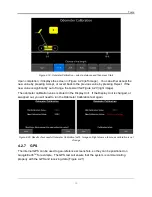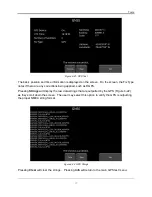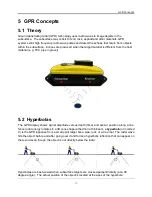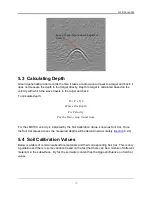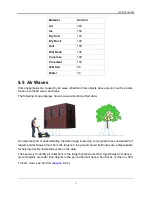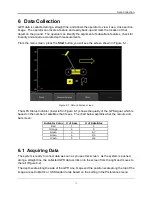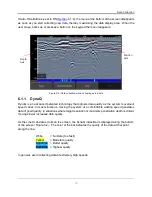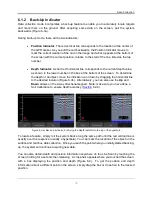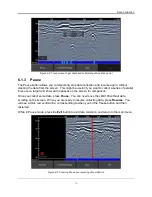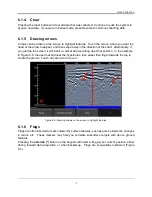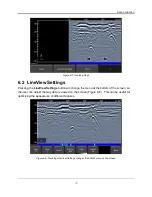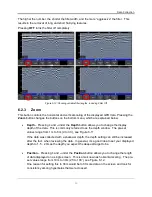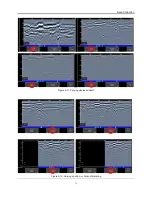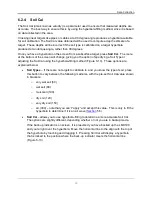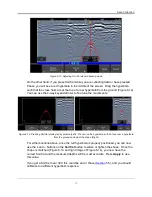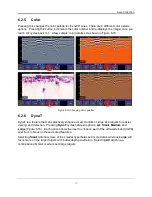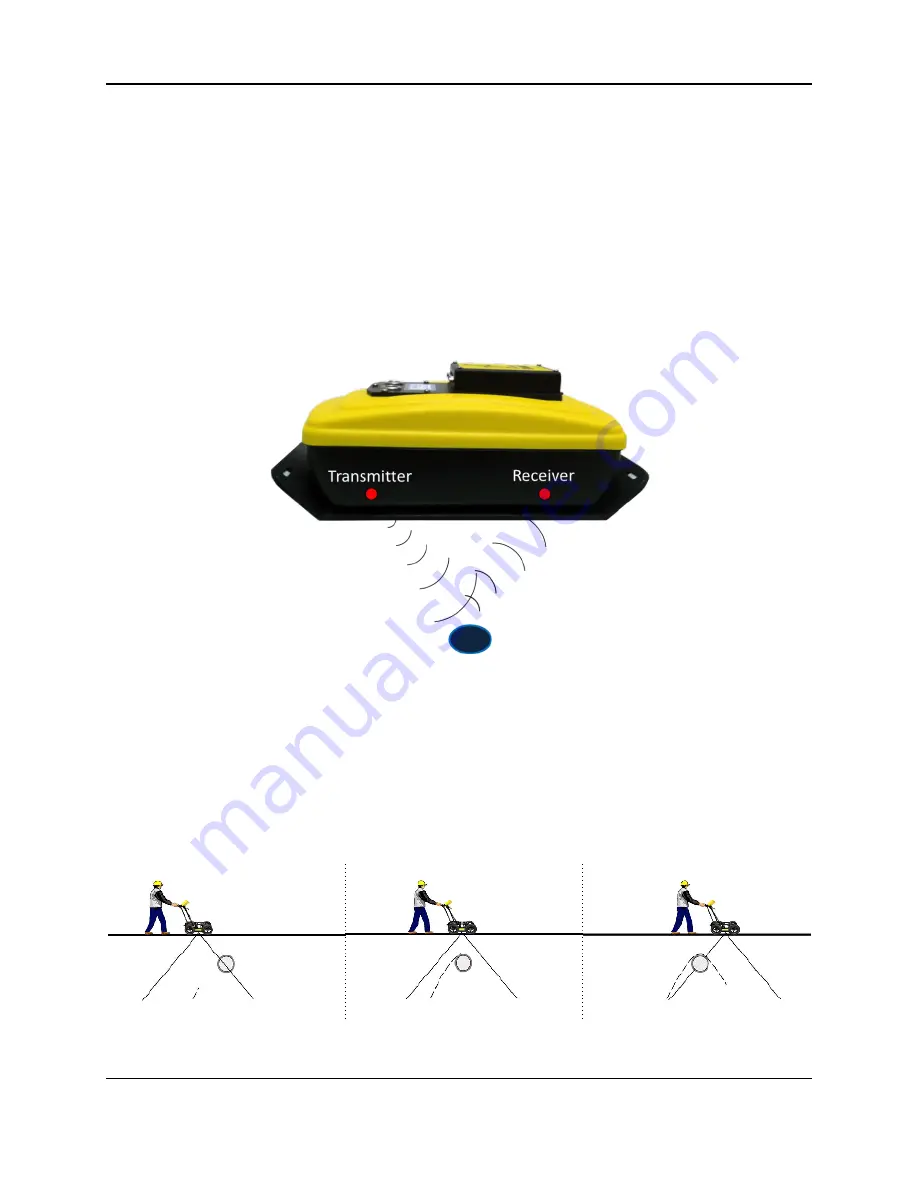
GPR Concepts
29
5 GPR Concepts
5.1 Theory
Ground penetrating radar (GPR) technology uses radio waves to image objects in the
subsurface. The subsurface may consist of soil, rock, asphalt and other materials. GPR
systems emit high frequency radio wave pulses and detect the echoes that return from objects
within the subsurface. Echoes are produced when the target material is different from the host
material (e.g. PVC pipe in gravel)
5.2 Hyperbolas
The GPR display shows signal amplitude versus depth (time) and sensor position along a line.
Since radar energy radiates in a 3D cone shape rather than a thin beam, a
hyperbola
(or inverted
U) is the GPR response from a small point target like a pipe, rock, or a tree root. The radar wave
hits the object before and after going over it and forms a hyperbolic reflection that can appear on
the record even though the object is not directly below the radar:
Hyperbolas are best viewed when subsurface targets are crossed perpendicularly (at a 90
degree angle). The actual position of the object is located at the apex of the hyperbola.
Summary of Contents for LMX100
Page 1: ...2016 00048 05 ...
Page 2: ...ii ...
Page 4: ...Product Registration iv ...
Page 10: ...x ...
Page 14: ...Overview 2 ...
Page 40: ...Tools 28 ...
Page 44: ...GPR Concepts 32 ...
Page 58: ...Data Collection 46 ...
Page 63: ...Screenshots Mini Reports 51 Figure 7 6 Example of a Mini Report ...
Page 64: ...Screenshots Mini Reports 52 ...
Page 68: ...Transferring Data to a PC 56 ...
Page 72: ...Troubleshooting 60 ...
Page 75: ...Care Maintenance 63 ...
Page 76: ...Care Maintenance 64 ...
Page 78: ...Parts List Accessories 66 ...
Page 80: ...Parts List Accessories 68 ...
Page 82: ...Technical Specifications 70 ...
Page 84: ...Appendix A Health Safety Certification 72 ...
Page 92: ...Appendix B GPR Emissions Interference and Regulations 80 ...
Page 94: ...Appendix C Instrument Interference 82 ...
Page 96: ...Appendix D Safety around Explosive Devices 84 ...

